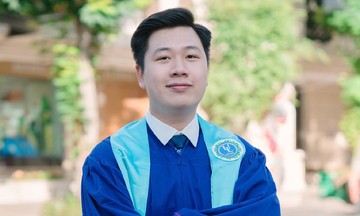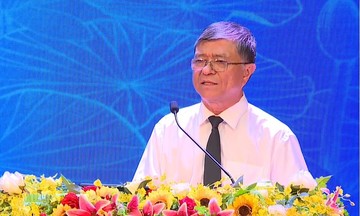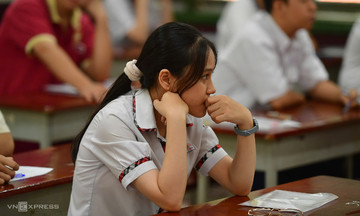By mid-June, all provinces and cities had completed the public 10th-grade entrance exams, most of which included literature, math, and English. As the first year the exams were administered under the new national curriculum, there were significant changes to the content.
According to Nguyen Cao Cuong, principal of Thai Thinh Secondary School, the math exam structure fell into one of three categories: entirely essay-based (e.g., Hanoi, Ho Chi Minh City), entirely multiple-choice (Hai Phong, Hung Yen), and a combination of both (Bac Ninh).
Cuong noted that the entirely multiple-choice exams consisted of three question types similar to the high school graduation exams: multiple-choice, true-false, and short-answer.
"The entirely multiple-choice format is quite new for the 10th-grade entrance exam. However, it's a good way to familiarize students with the structure of the high school graduation exam," Cuong said.
Regardless of the format, Cuong and other educators agreed that a notable feature of this year's exam was the inclusion of many real-world math problems.
For example, the Da Nang exam asked students to calculate the ticket price for a family attending the International Fireworks Festival, a well-known city event. The Bac Ninh exam included a question related to Vietnam Book and Reading Culture Day. Nghe An, Hanoi, and Binh Duong incorporated problems related to shopping for clothes and school supplies. In previous years, such problems typically appeared only on the Ho Chi Minh City exam.
"The math problems were less theoretical and more practical, connected to everyday life. This makes the exercises more engaging and interesting for students," Cuong explained.
These real-world problems were often presented as word problems. Tran Nam Dung, vice principal of the High School for the Gifted, Vietnam National University, Ho Chi Minh City, believes this approach helps assess students' reading comprehension and modeling skills.
The Hanoi exam exemplified this. Question III, nearly half a page long and comprising three sub-questions, presented a scenario and asked students to calculate the distance from Hanoi to Hai Phong, the price of a backpack, and the price of a calculator. To solve this question, students had to define variables and establish relationships between those variables and the given values.
Additionally, exams in several locations, including Ho Chi Minh City, Hanoi, Vinh Phuc, and Binh Duong, included content on statistics and probability. This is also a new element specific to the 2018 curriculum, though these questions typically tested only basic understanding and comprehension.
Overall, Dung observed a clear shift in the exam design, focusing on evaluating students' qualities and competencies, a core requirement of the new curriculum.
"The exams are less technically demanding but require mathematical skills such as thinking and reasoning, modeling, and problem-solving," Dung commented.
 |
Students after completing the 10th-grade entrance exam in Hanoi in 2025. Photo: Tung Dinh |
Students after completing the 10th-grade entrance exam in Hanoi in 2025. Photo: Tung Dinh
However, some aspects of this year's 10th-grade math exams raised concerns among educators. The vice principal of a high school in Ha Tinh found the multiple-choice sections of the Bac Ninh and Bac Giang exams too long, with 32 questions (4 points) and 20 questions (3 points), respectively.
"This means each question is worth only 0.125-0.15 points. This is too little," he said. He suggested that a multiple-choice question should be worth at least 0.25 points, with fill-in-the-blank and true-false questions worth even more.
He also recommended that at least 20-30% of the exam should be multiple-choice, rather than entirely essay-based. This would allow for a broader assessment of content and knowledge while familiarizing students with the format used in high school.
According to Dung, the greatest challenge for students during this transition is uncertainty about which theorems and knowledge can be used without proof, such as those related to cyclic quadrilaterals and power of a point. However, some localities have not yet clarified this for students.
Cuong echoed this suggestion. He proposed that sample exams for future years should be released earlier to familiarize students and teachers, especially with the 100% multiple-choice format.
Cuong hopes that exams in all subjects, not just math, will continue to align with the requirements of the new curriculum, moving away from rote memorization and towards practical application, evaluating students' qualities and competencies. This approach, he believes, will make learning more enjoyable, practical, and meaningful for students.
Thanh Hang - Le Nguyen












